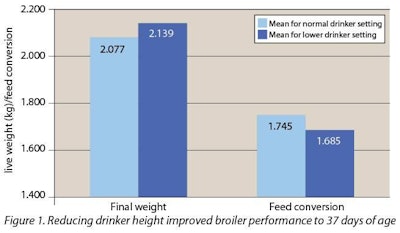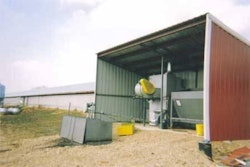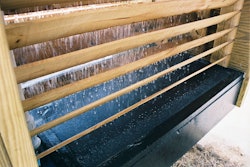
Dr Susan Watkins of the University of Arkansas sent me an e-mail the other day to let me know about a small experiment that she and co-workers ran in the farm's four houses recently, which highlights the dangers of accepting assumptions.
Dr Watkins explained that Dr Tom Tabler, the University's research farm manager, likes to set the nipple drinkers in the houses relatively high, so that the birds drink at an angle of 90 degrees. She added that the manager and service technicians felt that setting the drinkers lower would result in too much caked litter underneath the water lines. Dr Watkins decided to run an experiment to test out the theory.
She explained, "I got the manager to keep the lines lower in two houses, so that the birds drank at a 45-degree angle from 14 days of age to market age of 37 days. We did this for both styles of equipment we have Cumberland and Agile/Lubing. Our integrator, Simmons Foods, randomised the birds from each source across all houses so that chick source was the same."
In the trial, the birds had better feed conversion and weight gain in the houses where the drinkers were set lower. This was true for both brands of drinker (identified as A and B). Dr Watkins felt that the birds perform better when they do not have to stretch, particularly the smaller birds. The birds with the lower drinkers had a feed conversion six points better than the others, and they weighed 62g more.
The assumption that there would be more caking of the litter under the lower drinkers turned out not to be true. The two houses with the lower drinkers produced no more loads of caked litter than the two houses with the drinkers at the usual height.
Dr Watkins said, "While this style of management might not work for everyone because of the age of drinker systems, we probably should re-think our drinker management practices. Birds have changed over recent years and the usual practice of setting the drinkers so that the birds have to look up to drink may actually be detrimental to performance."
This was one of those experiments that both disproved a long-held assumption and also brought an unlooked-for bonus: setting drinkers lower did not result in the expected problem of caked litter but it did improve bird performance two results that increase broiler producers' profit for zero outlay.

















